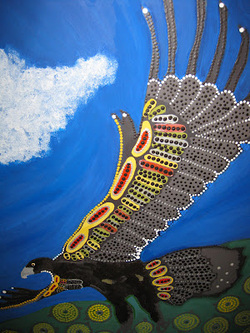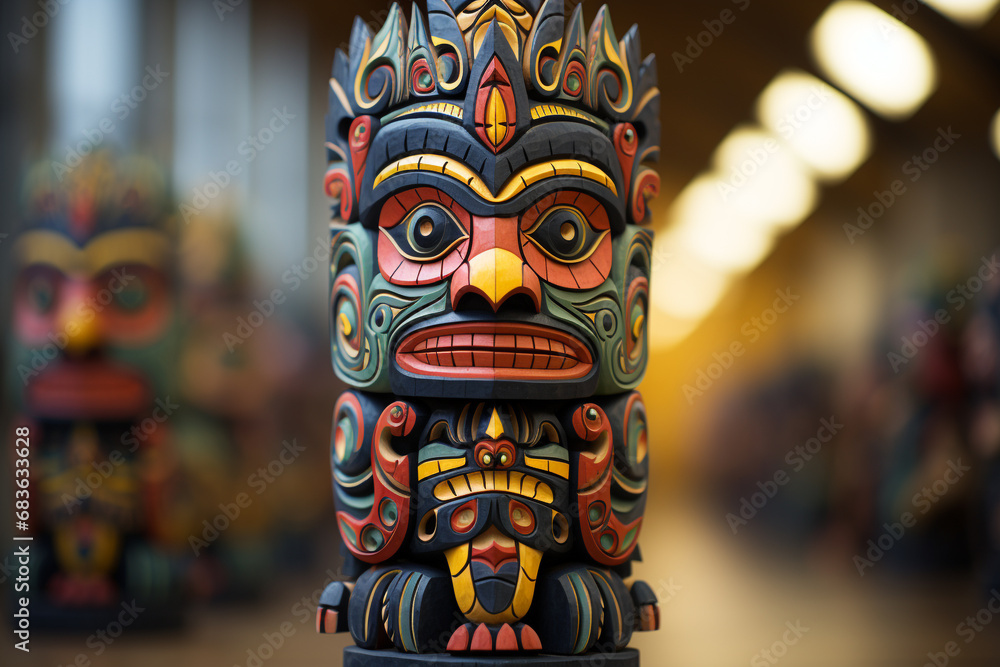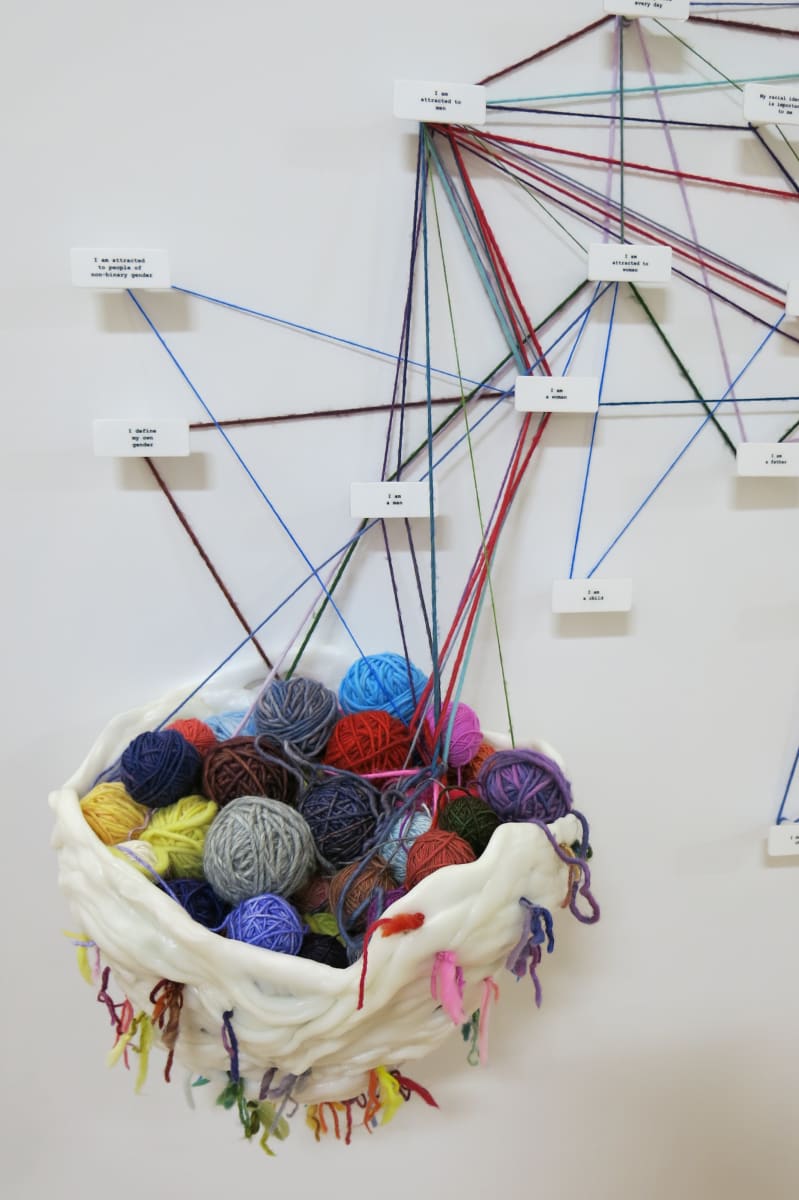Unraveling the Tapestry of Identity: The Significance of Totems in Indigenous Religions
Unraveling the Tapestry of Identity: The Significance of Totems in Indigenous Religions

Across the globe, indigenous cultures have long held a deep reverence for the natural world, weaving intricate connections between humans and the animal, plant, and celestial realms. One of the most prominent expressions of this interconnectedness is the concept of the totem, a powerful symbol that acts as a bridge between the spiritual and the physical, carrying profound significance in indigenous belief systems.
Beyond the Animal: The Essence of Totemism
Related Articles: Unraveling the Tapestry of Identity: The Significance of Totems in Indigenous Religions
- A Buzzing World: Exploring The Diverse Habitats Of Australian Bees
- Terra Nullius: Unmasking The Myth Of Empty Land
- The Buzz About Bees: Why These Tiny Creatures Are Essential To Our Ecosystem
- Aboriginal Vs AborigineTitle
- Unveiling The Secrets: Dreamtime And The Significance Of Dreams In Aboriginal Cultures
While the term "totem" often conjures images of animal figures, its true meaning extends far beyond a mere representation of fauna. Totems are multifaceted, embodying a complex interplay of spiritual, social, and ecological dimensions. They serve as:
- Spiritual Guides and Protectors: Totems represent powerful ancestral spirits or deities that watch over individuals, families, or entire communities. They offer guidance, protection, and strength, acting as intermediaries between the human world and the spirit realm.
- Identity Markers: Totems play a crucial role in defining individual and collective identity. They connect individuals to their lineage, clan, and ancestral history, providing a sense of belonging and continuity.
- Ecological Guardians: Totems often represent specific animals or plants that are deeply intertwined with the natural environment. By honoring and respecting these creatures, indigenous cultures acknowledge their interconnectedness with the ecosystem and promote sustainable practices.
- Moral and Social Compass: Totems can also symbolize specific values and principles that guide behavior within a community. They serve as reminders of ethical codes, social responsibilities, and the importance of maintaining harmony within the natural world.
The Diversity of Totemic Practices

The practice of totemism varies widely across different indigenous cultures, reflecting the unique beliefs and traditions of each group. Here are some examples:
- Aboriginal Australia: In Aboriginal culture, totems are deeply embedded in the concept of "Dreamtime," the ancestral period when the world was created. Individuals inherit their totem from their ancestors, representing a specific animal, plant, or natural phenomenon. These totems serve as guides, protectors, and symbols of identity, connecting individuals to the land and their ancestors.
- Native American Tribes: Native American tribes across North America have diverse totemic traditions. For example, the Cherokee people use animal totems to represent specific clans, each possessing unique characteristics and responsibilities. The totemic system helps maintain social order and ensures the well-being of the community.
- Native Hawaiian Culture: In Hawaiian culture, "aumakua" are ancestral spirits that act as guardians and protectors. These spirits can be represented by animals, plants, or even inanimate objects, and they are believed to possess supernatural powers. Aumakua play a vital role in family and community life, offering guidance and protection to their descendants.

The Enduring Power of Totems
Despite the challenges faced by indigenous cultures, the significance of totems continues to endure. These powerful symbols serve as reminders of the interconnectedness of all living beings, the importance of respect for the natural world, and the enduring strength of indigenous traditions. They offer a profound message of unity, harmony, and the enduring power of ancestral wisdom.
The Role of Totems in Contemporary Indigenous Cultures
In the modern world, totems continue to play a vital role in the lives of indigenous people. They are used in:

- Ceremonies and Rituals: Totems are often incorporated into traditional ceremonies, dances, and rituals, serving as a connection to the spiritual realm and a way to honor ancestors.
- Artistic Expressions: Totems are frequently depicted in indigenous art, music, and storytelling, preserving cultural traditions and sharing knowledge across generations.
- Environmental Activism: Totems are increasingly being used as symbols of environmental protection and resistance against exploitation of natural resources. They serve as reminders of the interconnectedness of all living things and the need to protect the planet for future generations.
The Importance of Respect and Understanding
It is crucial to approach the study and understanding of totemism with respect and sensitivity. Indigenous cultures have a long and rich history of spiritual practices, and it is essential to avoid misinterpretations or appropriation.
FAQ: The Significance of Totems in Indigenous Religion
Q: What is a totem?
A: A totem is a spiritual symbol, often represented by an animal, plant, or natural phenomenon, that serves as a guide, protector, and identity marker in indigenous cultures.
Q: Why are totems important?
A: Totems connect individuals and communities to their ancestors, the natural world, and the spiritual realm. They provide a sense of identity, guidance, and protection.
Q: How do totems differ across cultures?
A: Totemic practices vary widely across indigenous cultures, reflecting their unique beliefs, traditions, and relationships with the environment.
Q: Are totems still relevant today?
A: Yes, totems continue to play a vital role in contemporary indigenous cultures, serving as symbols of identity, spiritual connection, and environmental stewardship.
Q: How can I learn more about totemism?
A: You can learn more about totemism by researching specific indigenous cultures, attending cultural events, or engaging with indigenous communities. It is essential to approach this topic with respect and sensitivity.
Conclusion:
The concept of totems offers a profound glimpse into the rich tapestry of indigenous cultures and their deep reverence for the natural world. These powerful symbols represent a legacy of wisdom, interconnectedness, and spiritual connection that continues to inspire and guide generations. By understanding the significance of totems, we can gain a deeper appreciation for the diversity of human experience and the vital role of indigenous knowledge in shaping a more sustainable and harmonious future.
Closure
Thus, we hope this article has provided valuable insights into Unraveling the Tapestry of Identity: The Significance of Totems in Indigenous Religions. We hope you find this article informative and beneficial. See you in our next article!



